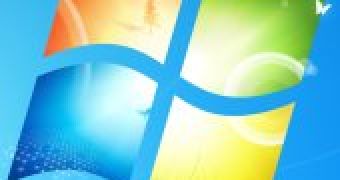Windows 7’s evolution compared to Windows Vista is undeniable, and the lucky few that so far have had access to the RTM bits of the latest Windows client can confirm this. But fact of the matter is that even in Beta Build 7000 development stage, Windows 7 bested Vista, and the boot time performance drag race is an illustrative example in this regard. However, Windows 7 startup speeds manage to leave its precursor in the dust. Some of you might remember reading about the 11-second boot Windows 7 delivered in a demonstration courtesy of Ruston Panabaker, Microsoft's principal program manager of strategic silicon partnering. (via PCMag and Beyond Binary)
Yes, Windows 7 booting in just 11 seconds. My first question was, what kind of computer was Panabaker running, for obvious, and geeky, reasons. So I went ahead, and shot an email to Microsoft asking for details about the hardware configuration of the 11-second Windows 7 boot machine. Here is the answer a company spokesperson provided me: “This was ran on a Quad-core 1.7 GHz Nehalem [Core i7] processor on a Calpella chipset, 2GB of memory, 80 GB Intel X25-M SSD (1st gen). In the set up, the log-in screen was turned off in the user control panel.”
However, the Microsoft representative noted that the 11-second boot represented just the startup time for Windows 7. “Note: BIOS post is in addition to this,” the company spokesperson added. My second question was what kind of optimizations went into making this kind of performance possible. The way I figured it, if I have the hardware configuration, and know about the tweaks, maybe I can do it myself. But guess what?
Yes, it’s all Windows 7, and nothing but Windows 7. “Nothing else special was done to create the 11 second boot time for Windows to the desktop,” the Microsoft spokesperson shared with me. As some of you might recall, Microsoft revealed early on in the development process of its latest Windows client the fact that it had revamped the way that the platform dealt with services. In Vista and previous releases of Windows, every service that is scheduled to start during operating system startup adds precious time to the overall experience.
In Windows 7 this is no longer the case. Vista’s successor features a mechanism that only starts services on demand. Essentially, Windows 7 contains the Trigger Start Services feature and delivers the evolution of the service control manager (SCM), reducing the number of services using Automatic Start, and taking a load off RAM and I/O.
My next question was related to the work end users need to do to achieve similar, and I stress similar, performance with their own computers. “Users should train Windows on what to pre-fetch during boot. This can be done by rebooting their PC several times,” the Microsoft spokesperson said.
Windows 7 RTM Enterprise 90-Day Evaluation is available for download here.

 14 DAY TRIAL //
14 DAY TRIAL //